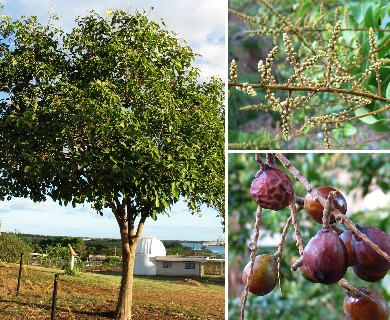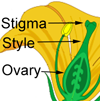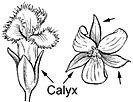Āulu
Sapindus oahuensis
Maple family (Sapindaceae)
Native species ()
This medium-sized tree native to Oahu and Kauai is a relative of the widespread species wingleaf soapberry, Sapindus saponaria L., but differs in that the leaves are rather than A tree to 60 ft (18 ) high and 1 1⁄2 ft (0.5 ) in trunk diameter. Bark gray, smoothish, slightly fissured. Inner bark is light orange streaked. Twigs light brown, finely hairy when young, becoming hairless, with tiny cracks, with small dark brown pointed hairy side buds.

©2008 David Eickhoff
Flower clusters () and at base of uppermost leaves, 2–6 inches (5–15 ) long, much branched, the long wide-spreading branches dark brown, finely hairy. Flowers are very numerous, male and female, short-stalked, slightly bell-shaped, about 1⁄4 inch (6 ) wide, light greenish yellow. Male flowers with of five overlapping rounded light green hairy 1⁄8 inch (3 ) long, of five spreading greenish white hairy petals 3⁄16 inch (5 ) long, eight on rounded and tiny Female flowers have similar and eight minute sterile on a and with elliptical slightly 2–3- and 2–3-celled and dot
an elliptical (coccus), sometimes two, 3⁄4–1 inch (2–2.5 ) long, shiny and leathery. Seed single, elliptical, black, 1⁄4–3⁄4 inch (12–20 ) long, rough.
Wood light brown, hard.
The seeds were used in home remedies as a cathartic and were strung in leis. Like those of the common soapberry, they may be poisonous.
Fairly common, scattered in dry forests at 200–2000 ft (61–610 ) altitude.
Special areas
Wahiawa, Bishop Museum
Range
Oahu and Kauai only
Other common names
kaulu, Oahu soapberry. The name lonomea is used on Kauai.
The trees of Kauai, known by the Hawaiian name lonomea, have been treated also as a separate species, Sapindus lonomea St. John (1977b).












